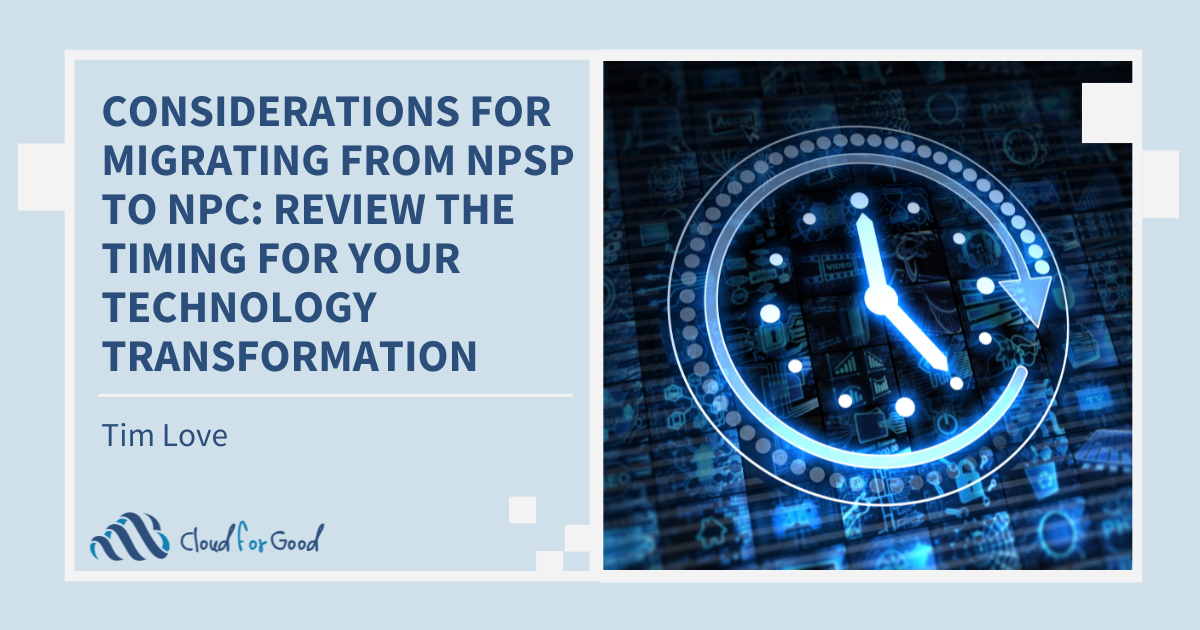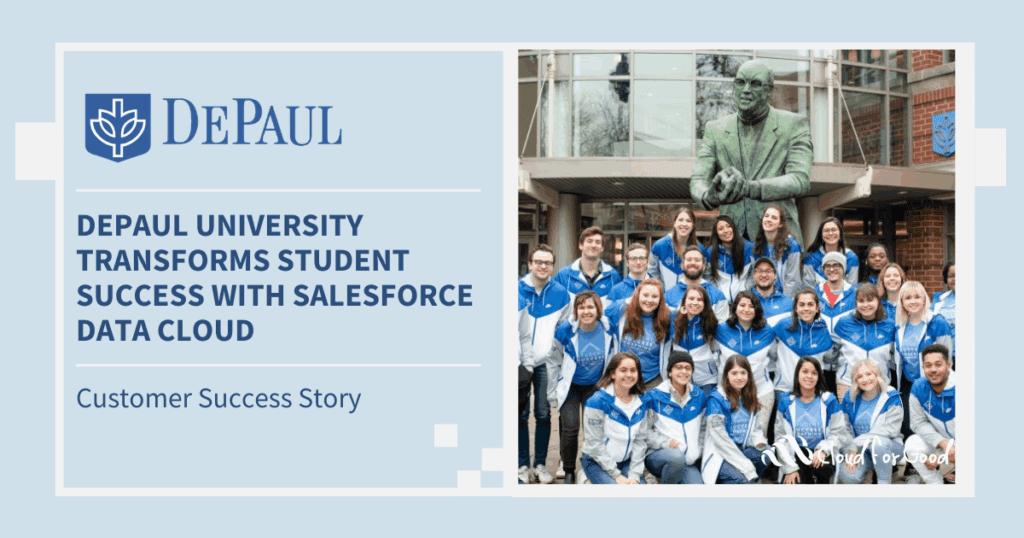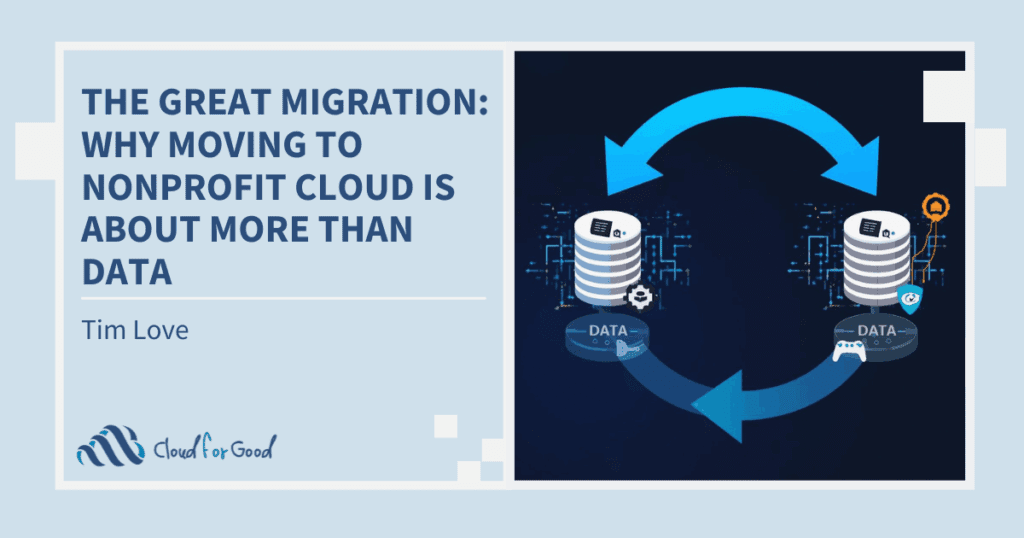Organizational technology transformations happen all the time, but for migrations from Salesforce Nonprofit Success Pack (NPSP) to Nonprofit Cloud (NPC), timing is an important consideration. There is no fixed rule for when your organization should make the change, but as you determine the best time to make the change from NPSP to NPC, consider your organization’s specific needs, organization size, technological advancements, and the capabilities of your current CRM system. To help determine when to make the switch from NPSP to Nonprofit Cloud, here are some key questions you should ask:
What Are My Business Needs?
As a best practice, organizations should periodically evaluate their CRM systems to ensure their systems meet their business needs. This includes assessing and reviewing how much longer the organization can be on their current CRM and evaluating and identifying any existing technology debt. Some organizations find that they can continue using the same CRM for several more years with regular updates and improvements. Some others may need to upgrade or switch to a new CRM sooner based on their specific circumstances.
Is My System Is Easy to Use?
Salesforce is dedicated to innovation and every year they provide three regular releases that are full of new product features and enhancements, including Nonprofit Cloud enhancements, designed to simplify the user experience. This includes more efficient architecture for gift management, which means that organizations don’t have to consume as much of their data storage to track single transaction gifts, leaving them with the capacity to track more complex gift commitments as needed. Tracking a wide variety of relationships and interpersonal connections beyond core households is made possible on Nonprofit Cloud’s Person Account model with party relationship groups, allowing organizations to expand their network of engaged supporters.
Is My System Able to Keep Up With Product Innovations?
Nonprofit Cloud has scalability advantages due to being developed on the Core Salesforce platform rather than as a managed package add-on solution. This means that as Salesforce makes broader product investment and platform updates on Nonprofit Cloud, any new Salesforce release features and enhancements in Nonprofit Cloud will be applied automatically. Managed package Salesforce solutions, in contrast, are usually a release or two behind. In addition, all new features for nonprofit solutions will be on Nonprofit Cloud and not NPSP, so by migrating to Nonprofit Cloud, you are “future-proofing” your organization’s technology and reducing the technical debt that comes with a managed package solution like NPSP—ultimately helping your system become easier to use and scale.
Is My Team Utilizing NPSP to the Fullest Potential?
If your organization needs help adopting or effectively using its existing NPSP technology, it might be a natural time to explore Nonprofit Cloud. Use this time as an opportunity to redefine your business processes and the usability of your system.
Have Your Strategic Business Goals Shifted?
Consider a migration if your business strategy shifts significantly or your organization expands into new markets or programs. Ensuring your CRM system aligns with your new approach is essential, and migration to Nonprofit Cloud can be an opportunity to realign and refresh how your data supports your strategic business objectives.
To find out more about timing your technology transformation and other top considerations for migrating from NPSP to Nonprofit Cloud, read our recently published eBook or take our Migration Complexity Assessment below to benchmark how complex your migration from NPSP to NPC may be.
Want to Know How Complex Your Migration From NPSP to NPC Might be?
You May Also Enjoy:
Blog: Considerations for Migrating from NPSP to NPC: Assess Your Current Salesforce Footprint





